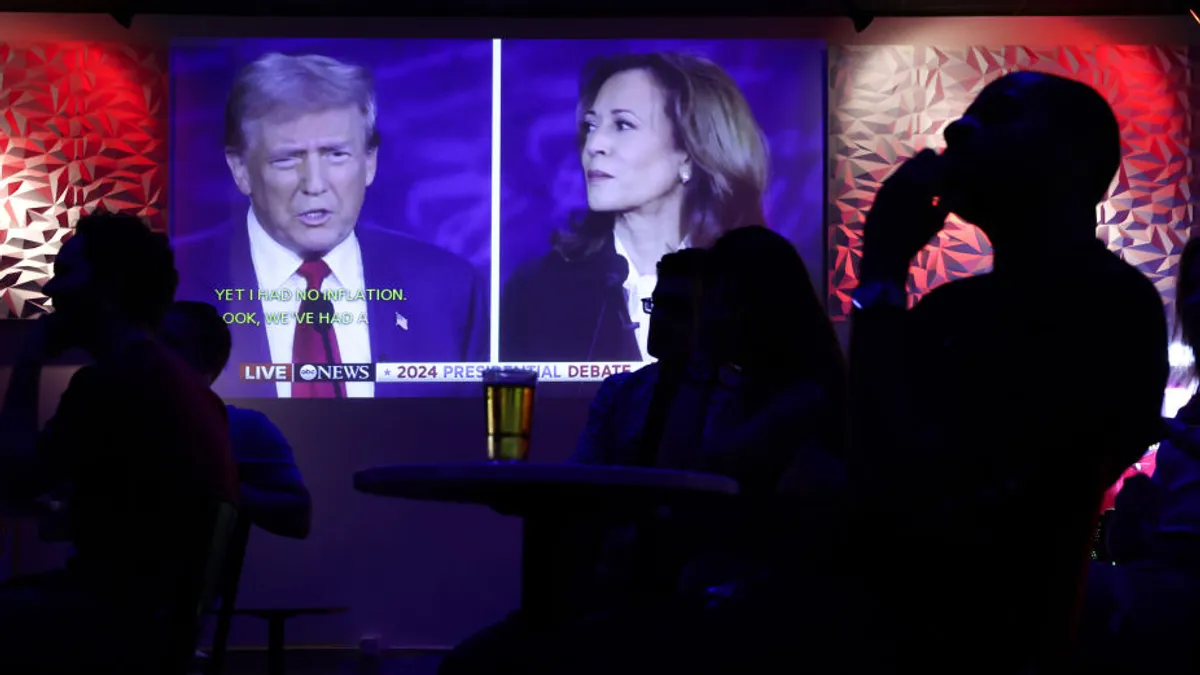Dive Brief:
- The Coca-Cola Co. announced Monday new packaging and other sustainability goals to reach by 2035. The two new packaging goals center on packaging design and collection after use and replace previous goals, including 2025 and 2030 targets related to recyclability, recycled content and reusable packaging.
- One new goal calls for using 35% to 40% recycled material in primary packaging (plastic, glass and aluminum), including increasing recycled plastic use to between 30% and 35% globally. The other new goal focuses on partnering to collect used packaging; the company aims to help ensure the collection of 70% to 75% of the equivalent number of bottles and cans introduced into the market annually.
- The beverage giant also called for reducing its scope 1, 2 and 3 emissions in alignment with a 1.5 degrees Celsius trajectory by 2035, compared to a 2019 baseline, but did not specify an emissions reduction target or figure. In a previous environmental update, Coca-Cola stated it had set a goal to cut absolute emissions by 25% by 2030 against a 2015 baseline. This target was not included in the latest iteration.
Dive Insight:
Coca-Cola’s new goals not only push out the target year across its goal areas, they also appear to narrow the company’s ambition. For instance, under the beverage giant’s World Without Waste campaign, the company sought in 2018 to recycle the equivalent of 100% of its packaging by 2030; now it’s focused on partnering on collection for three-quarters of the equivalent number of bottles and cans introduced into the market annually.
Coca-Cola noted some caveats with its efforts. When it comes to increasing recycled content in primary plastic, glass and aluminum packaging, the company noted costs, quality and scaling challenges could affect implementation. In 2023, 47.7% of Coca-Cola’s packaging mix was plastic bottles, 26% was aluminum and steel bottles and cans, and 10.4% were glass bottles.
Regarding collection, the company highlighted challenges with recycling variations between jurisdictions and the importance of collective action. “The company will continue to focus on increased advocacy for well-designed collection systems,” it said. Coca-Cola suggested its new collection goal offers room to grow, saying that if it hits the 75% target it will “continue working to further increase collection over the long term.”
In terms of sustainability, the soft drink distributor said it aims to cut emissions across its own operations, including concentrate manufacturing and company-owned bottling partners, but did not specify a reduction target for 2035. Coca-Cola said its actions on packaging and water conservation could also help mitigate the adverse impacts of climate change.
However, it acknowledged that achieving its sustainability targets requires ramping up investments in new technologies and renewable energy sources, in addition to increasing collaboration with franchise bottling partners and suppliers to reduce the company’s scope 3 emissions.
Coca-Cola’s challenges are “complex” as it pursues “evolved voluntary environmental goals,” said Bea Perez, executive vice president and global chief communications, sustainability and strategic partnerships officer, in the announcement.
The beverage company did not name any new goals related to reuse, but said it “intends to continue to invest in refillable packaging where infrastructure already exists.”
Break Free From Plastic slammed Coca-Cola’s apparent departure from reuse targets.
“Coca-Cola’s pledge lasted less time than one of their reusable bottles might expect to be in circulation,” said Sam Pearse, campaign director of The Story of Stuff Project, in a BFFP press release. “The fact that the company’s share of reusable packaging only dropped down further after the 25% reuse pledge reflects a serious lack of intent.” In 2023, 1.2% of Coca-Cola’s plastic packaging was reusable.
In a short environmental update document released in August, Coca-Cola calculated the recyclability rate across its portfolio at 90%. The percentage of recycled PET used in its primary consumer packaging was 17%. The company announced it was “on track” to meet its 2025 goal to make all of its packaging recyclable globally, but was “behind plan” to meet its 2030 recycled content and collection goals.
Competitor PepsiCo also noted this year it was unlikely to reach its 2025 goal to design 100% of its packaging to be recyclable, compostable, biodegradable or reusable.
Coca-Cola’s announcement adds to a wave of packaging goal changes by brands this year ahead of 2025, including at Unilever and Grove. It also comes as the company faces lawsuits over its alleged role in plastic pollution, including in Los Angeles County and the city of Baltimore.
Coca-Cola also participates in the U.S. Plastics Pact, which this past year revamped its 2025 goals around reducing virgin plastic, recycling, and PCR and biobased content. Its updated road map set targets for 2030.
Additionally, Coca-Cola is a signatory to the Ellen MacArthur Foundation’s global commitment, which was launched in 2018. A recent progress report from EMF showed Coca-Cola is among the companies that have increased, rather than decreased, virgin plastic use — up about 6% since 2019.
Zoya Mirza contributed to this report.












